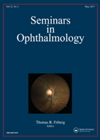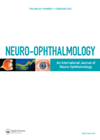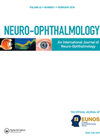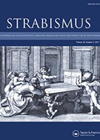
Journal Reviews
Association between colour vision impairment and amyotrophic lateral sclerosis (ALS)
The purpose of this study is to test the hypothesis that colour vision impairment is associated with amyotrophic lateral sclerosis (ALS). Abnormalities of the inner and intermediate retinal structures in patients with ALS have been described using optical coherence tomography...
Treatment for post stroke visual impairment – clinical practice versus literature evidence
The aim of this paper is to compare the treatments reported in a large scale stroke study (Vision in stroke (VIS) Study) against the treatments identified in a full systematic literature review. The purpose was to identify which treatment /...
Retreatment of myopic LASIK with femtosecond and custom ablation
The purpose of this study was to identify the risk factors for retreatment post laser in situ keratomileusis (LASIK). A retrospective chart review was carried out for a four-year period and all patients who had undergone LASIK at the Boston...
Driving with the use of spectacle mounted telescopes (bioptics)
The authors discuss the current perspectives of spectacle mounted telescopes (bioptics) whilst driving among patients with visual impairment. The history, design and driving laws surrounding the use of bioptics is discussed in detail. In 1977, William Feinbloom developed a bioptic...
Effect of oxygen levels on binocular summation of dark vision
Previous studies have reported conflicting results on the existence of binocular enhancement of dark vision. This study compares monocular and binocular absolute thresholds of dark adaptation in two different populations (healthy individuals and those with chronic respiratory insufficiency). The study...
Use of technology in low vision rehabilitation
This article is a review of the accessibility features available on tablets and smartphones for the visually impaired. It explains exactly what the accessibility features are, how to access them and how to use them as well as some useful...
Screening for stroke-related visual problems
The aim was to report the initial development and evaluation of a suitable screening tool for detecting visual problems after stroke. The tool has four components. The first three include questions asked by examiners about patients’ ocular history and symptoms,...









